Why John Safran can’t tell us about the Opera House protest
John Safran joined the Palestinian-flag waving crowds gathered at the Sydney Opera House after the October 7 attacks – specifically because police warned Jews to stay away. But he still doesn’t know what was chanted.
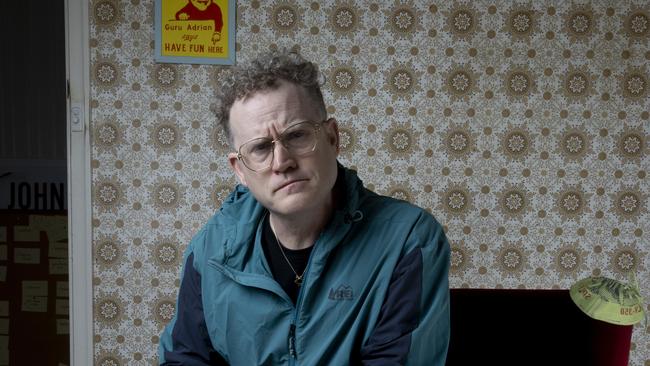
Tell me honestly, is this all true?
That is my first question for the writer and satirist John Safran, whose latest book is about how he broke into rapper Kanye West’s mansion, and squatted there.
“It’s true,” Safran says.
You really did sleep in Kanye’s bed, open the cupboards in his kitchen, eat his elbow pasta, and poo in the woods near his home?
“I did,” he agrees.
OK, and you know that it’s illegal to enter somebody’s house when they are not home, and partake of their pasta?
Safran says: “Based on what?”
Based on, I don’t know, the California criminal code? Wasn’t he worried, as he pushed through the woods to get on to Kanye’s property, that he might be seen? Arrested? Shot?
“Well, a neighbour told me that (Kanye) hadn’t been there for a while,” says Safran, “and probably if someone confronted me with a gun, I’d have tried to stop them from shooting me.”
Of course, but these things happen. And, as stunts go, this was high stakes. Maybe the mansion had been abandoned by Kanye, but maybe it hadn’t. The rapper has four small children. You don’t want to be mistaken for an intruder; you also don’t want a poor security guard to have to shoot you dead.
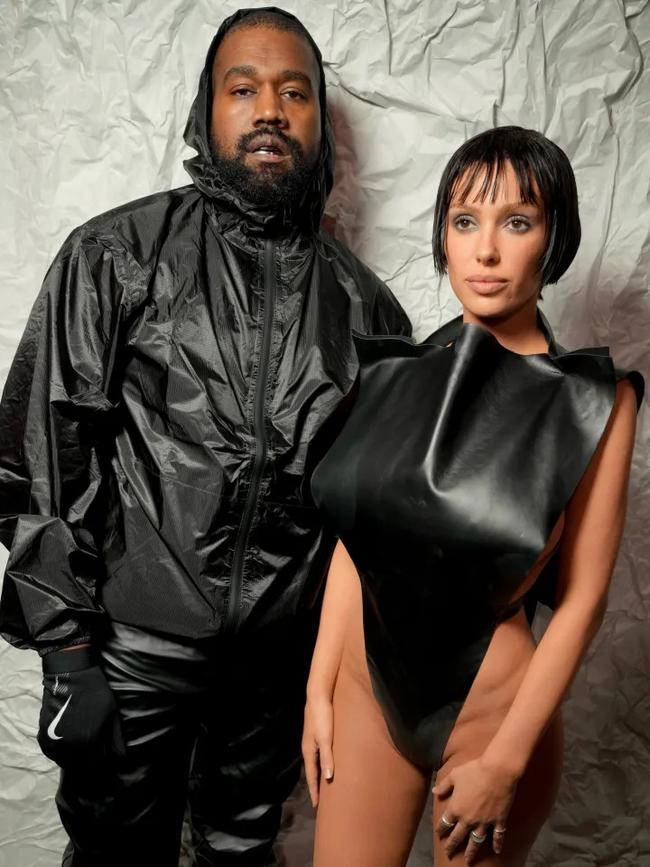
“No, you don’t,” says Safran, agreeably. “And I guess, when you put it all like that … look, I’m sort of left flailing a bit here, but it’s like with a lot of these things, I tend to get caught up in the moment. I think, ‘This is my job, and I’ve committed to doing it’ and look, I’ve done that before in my career, where it takes me a while to kind of process that what I’ve done could have any kind of consequences.
“I didn’t really think, ‘Someone’s going to shoot me’, or how bad they’re going to feel if they shot me. I thought, ‘This is me going out of my comfort zone, and it’s also what my audience expects from me’.”
Safran’s book about the adventure is called Squat, which is what he decided to do after Kanye started ranting about the Jews. It wasn’t like he was a mega-fan of the rapper’s music. He just thought it stank. “In 2005, Kanye complained in Gold Digger that women were after his wallet,” Safran writes. “By October 2022, he was airing his grievances about another group of alleged gold diggers. The Jews.” He says the rapper posted on social media, “I’m a bit sleepy tonight but when I wake up, I’m going death con 3 on JEWISH PEOPLE”.
Safran also refers to reports that Ye drew a swastika on a sneaker in a meeting with Adidas personnel, and “pushed the notion that Jews were cunning with money”. The rapper lost a chunk of his fortune in the process, after Adidas decided to distance themselves from contacts with him, but then the Twitterati started to complain that it’s only Jews that seem able to get people sacked (Safran says this is demonstrably not true, and uses Roseanne Barr as an example, saying she was sacked from the ABC in the US for remarks deemed racist against African-Americans.)
“I thought, ‘OK there’s something interesting going on here,’ ” says Safran, “and he – Kanye – is a good figure to investigate, to use as a bit of a trigger point.” He wasn’t planning to squat in Kanye’s mansion when he left Australia for the US, seven months ahead of the October 7 massacre in Israel, but doing shocking and maybe even illegal things has long been his shtick.

Safran, who is now 52, yet presenting as impish as ever, came to prominence during the ABC’s Race Around The World in 1997, which saw him running naked but for a St Kilda scarf and beanie through the streets of Jerusalem. He’s since had a wonderful career in TV and radio.
People still remember the time he went through Ray Martin’s garbage bins, while pretending to be an annoying current affairs reporter. He’s written an important book about nicotine and vapes (Puff Piece, which was shortlisted for a Prime Minister’s Literary Award) and another about the threat of domestic terrorism (Depends What You Mean By Extremists). He’s won a Ned Kelly Award for Best True Crime, and he’s been shortlisted for the Melbourne Prize for Literature.
Some of his earlier work has dealt with his Jewish ancestry. He has long been amused by the idea that Jews “can’t experience antiSemitism because they’re white”, saying his grandparents, who fled Poland for the Soviet Union in 1939 ahead of the massacre of their entire family would have taken issue with that.
“If you reckon Jews go on about the Holocaust too much, you should have been in my grandparents’ lounge room,” Safran writes. “They never spoke about it. And you knew not to bring it up.”
Safran notes that Kanye insists that he can’t be anti-Semitic because he once “f..ked a Jewish bitch”. His plan in travelling to the US was to find and confront the rapper, and maybe give him some home truths about anti-Semitism, or else, one of the yarmulkes he’s had made out of Yeezy sneakers. He was accompanied on his adventure by his then-girlfriend, the artist and actor Antoinette Barbouttis (their relationship did not survive the post-adventure book-writing period). She helped him locate some of the four properties the rapper owns in California. Upon approaching the first one she says she’s “scared of being shot” but for Safran, getting inside is more like “the rush of a rollercoaster ride, one at an old amusement park, where you fear they haven’t checked whether the bolts are still screwed tight enough. A policeman or a Kanye security guard might truly come …”
The first place they approach is more like a schoolhouse than a house-house. Safran thinks it’s the headquarters of the old Yeezy Christian Academy, which the rapper renamed the Donda Academy, after his mum, Donda West, who died in 2007. The property is surrounded by “an epic metal gate”. writes Safran. “Forced into the gap between the gate and one of the pillars is an envelope (which) shows the logo of a water company. It’s addressed to Kanye West.”
When Safran gets inside, he finds more envelopes “strewn across the concrete floor, coated in dust. Many are unopened utility bills addressed to the Donda Academy … Other envelopes are addressed to Kanye personally, the lettering jagged and blotchy. Crouching, flicking through them, I’m guessing these are fan mail.”
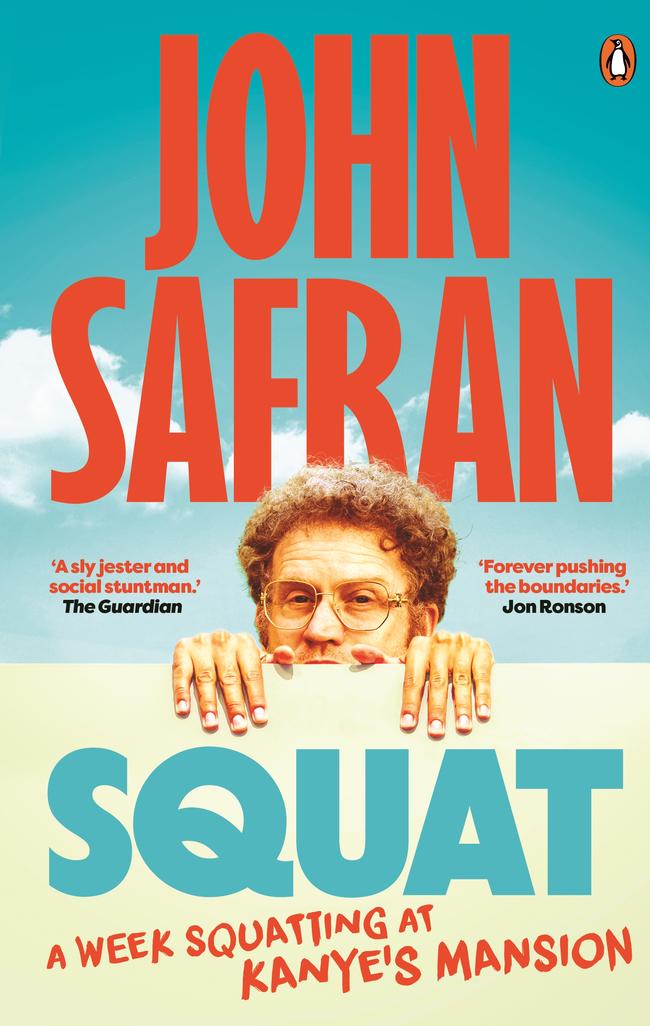
In another room, he finds a stack of children’s artwork, in crayon and paint, and here’s where things get a little creepy. He says Antoinette examines “those by Chicago and Psalm, the younger of the four children that Kanye shares with his ex-wife, Kim Kardashian’’.
At which point, I was thinking, however odious you may find Kanye, you guys, you really shouldn’t be in there.
Which is the point, I guess. Next stop for Safran is an actual mansion that Kanye apparently moved into, after splitting from Kim. It’s in a place called Calabasas, in the hills behind Los Angeles. Safran questions a neighbour, who tells him that the West mansion has been empty for more than a year.
Safran begins to wonder: “How would I get onto the grounds?”

He goes to a camping store and stocks up, buying a handheld shovel for his poo, a lantern, a head torch and batteries (in case the power is off); a first-aid kit, an all-in-one screwdriver, body wipes, a field guide to animal tracks, and a spork. From a grocery store, he buys powdered milk, canned vegetables, canned fruits, canned tuna, granola bars, beef jerky, chocolate, crackers, nachos, popcorn, peanut butter, honey, mandarins and bunch of bananas.
Kanye’s mansion is flanked by a stream and surrounded by forest. Safran follows the stream, and fights his way through the woods, and when he pops out, there stands Kanye’s mansion. He scrambles up, opens the door about “the width of my skull” and pops his head inside, saying: “Hello?”
“Craning my neck back and forth, I find no one to return my salutation,” he writes. He can see a keyboard with a snaking cord in a room that has “a ceiling so high you could rent it out to circus acrobats’’.
The walls, ceiling and floor are all painted the same hue of blue. Safran enters and begins to wander around. In the kitchen, he finds pasta and spices. In the fridge, he finds 14 bottles of sake. He opens one and takes a sip.
In time, he takes to Kanye’s bed. In the days that follow, he describes himself doing his business – “I pull down my pants. I squat at Kanye’s” – while Antoinette throws Egg McMuffins (no bacon) over the fence for him to eat.
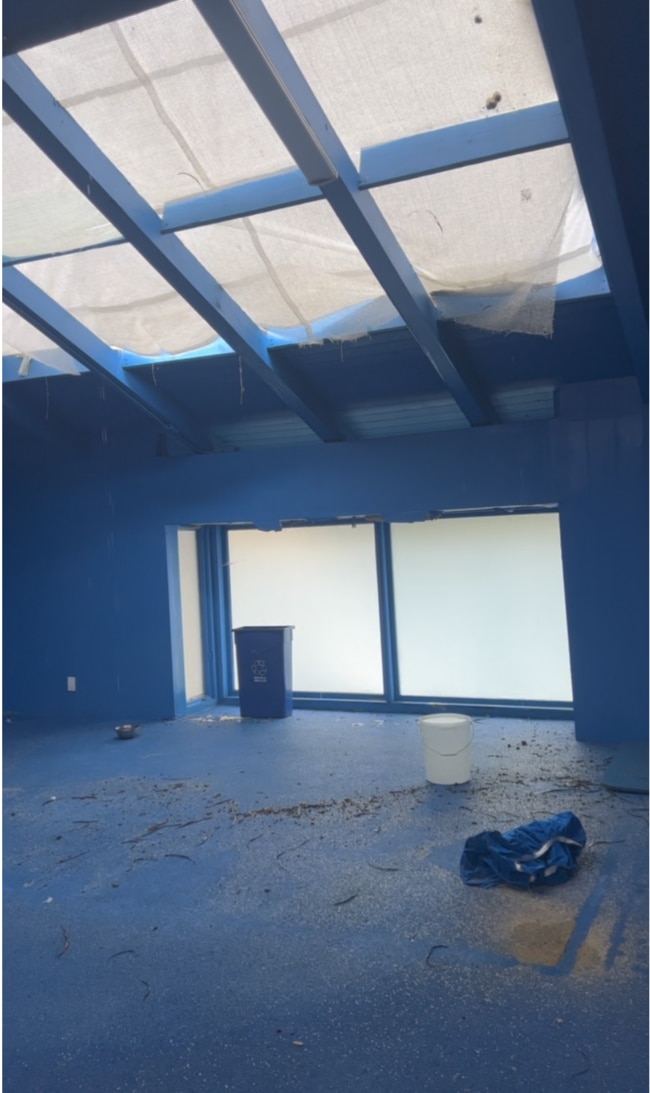
It’s clear from the book that he was worried about getting caught. “Do I want to find someone inside? (Good for the book!),” he writes. “Or am I praying that no one’s inside who can call the police, or punch me in the jaw? (If I’m punched in the jaw, is that good for the book?)”
He’s also alive to the possibility that he may run into Kanye, at any point.
“Sitting on Kanye’s bed, facing the window, I unfold my laptop. It occurred to me that, if I bumped into Kanye, I needed a line to open with. What was my way in?” he writes.
He considers: “Hi, Kanye, I’m Jewish, like … Jesus!” Or maybe: “Hi, Kanye, I’m from Melbourne, like your wife.”
Pop culture aficionados will already know this, but Kanye’s wife, the eerily quiet Bianca Censori, is from Melbourne. You’ve perhaps seen pictures of her, near-to-bare-breasted at Nobu, wearing socks with her stilettos. I’ve never been able to decide whether she’s taking part in some kind of elaborate performance art piece, or completely enslaved.

“Maybe she’s just on her own adventure … a bit like me, on her own Kanye adventure,” says Safran.
Safran writes in his book about opening Kanye’s cupboards and settling into his cars. He claims to have a Kanye West credit card in his wallet, and wonders how it would feel to be the Jew literally reaching into Kanye’s bank account to pay for coffee with it. Upon finding thousands of copies of a book written by Kanye’s mum, he decides the rapper must have purchased them to boost his mum’s sales, and that makes him wonder whether maybe Kanye is a good guy after all.
But he also finds a stack of faceless and hairless dolls that look to him like Holocaust survivors.
So, the book isn’t all about the squatting in the woods, or in the house. Safran says he was aiming to “delve into Jewish identity and how people perceive Jews” as well as the complicated history of Jewish Americans and Black Americans, “and the tensions between the two’’.
He travels around and meets some of the people in Kanye’s circle, including a Christian pastor. He drops in on a gathering of the Black Hebrew Israelites; he attends a casting call for Yeezy fashion. Eventually he returns to Melbourne, where he settles down to finish the book … and then comes Hamas’s massacre of Jewish civilians on October 7.
Safran says he wasn’t sure whether to include anything about the attacks, or the anti-Semitism that has flared around the world since October 7, but decided “you can’t really do a book about anti-Semitism, about Jews, about how people perceive Jews, and leave out the whole of recent history’’.
In a truly Safranesque move, he decides to join the Palestinian -flag waving crowds gathered at the Sydney Opera House, specifically because NSW Police have warned Jews to stay away.
This was the event at which the phrase “gas the Jews” or perhaps “where’s the Jews?” was heard by some in the crowd. Safran says he can’t say what was chanted, because he was moved on by police “for being Jewish”. (NSW police are quoted in his book saying he has to move for his own safety, despite the fact that he’s just standing there while a man pushes a phone screen into his face, to show him a picture in which the Star of David on the Israeli flag has been swapped out for a poo emoji).
In the year since the attacks, Safran has heard all manner of claims about the power Australian Jews are said to have over politics and the media. He thinks it’s overstated. He says the “vast, vast majority” of Jews on the “list of Jewish creatives” that went around last year “weren’t talking about cancelling people ... I’m against cancelling people ... the doxxing itself was an effort to mass cancel Jews.”
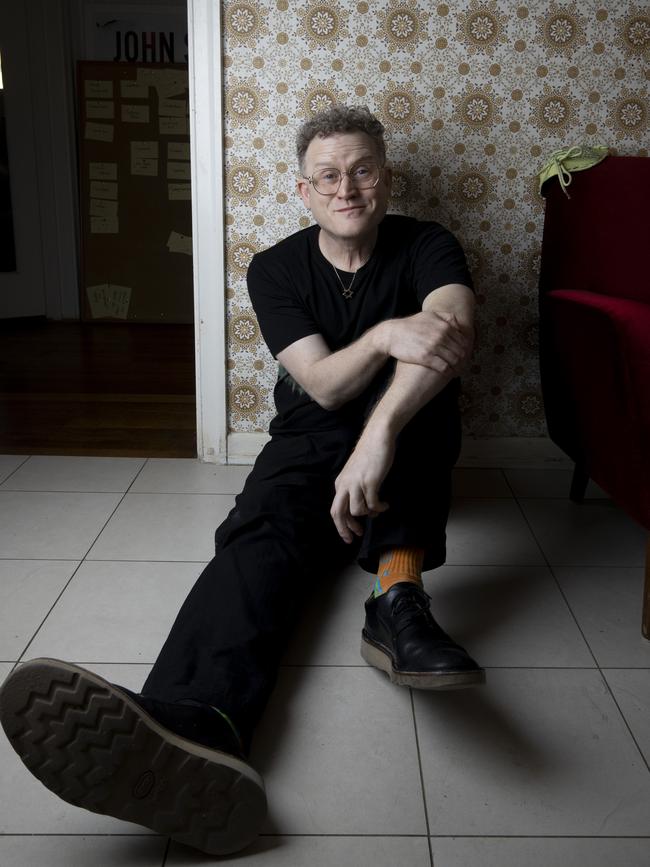
He says he’s of that generation “where you can be working with somebody, and you can hear what they think about something and maybe you don’t agree, but you don’t say: oh, OK, I won’t work alongside them any more – they have to go. You just think, okay, we disagree.”
He personally supports a “two-state solution” to the Palestine-Israel problem, and he doesn’t think Australians are particularly anti-Semitic, saying: “No, generally speaking, Australia seems to be pretty good, actually. What I find is that you don’t, in this country, have to explain that it’s bad to hassle Jews. People already know that.”
He adds that he wasn’t worried about being “doxxed” – it’s not like people don’t know he’s Jewish and creative – although attention does seem to be something on which he thrives.
His book is a good example: you are not allowed to break into people’s homes, and sleep in their beds. Safran knows that, and he did it anyway, for art. Now it’s for readers to decide whether it’s, well, kosher.
Squat: A Week Squatting at Kanye’s Mansion by John Safran (Penguin Books Australia) is out now.

